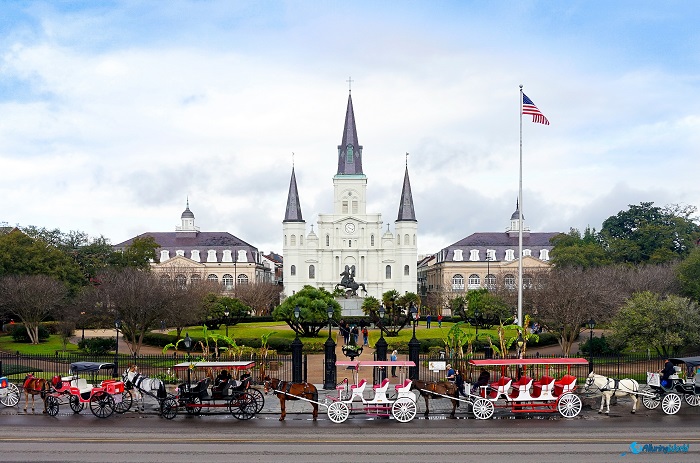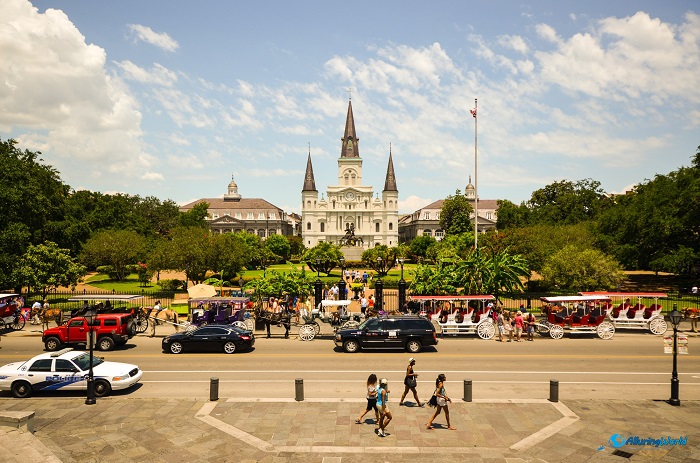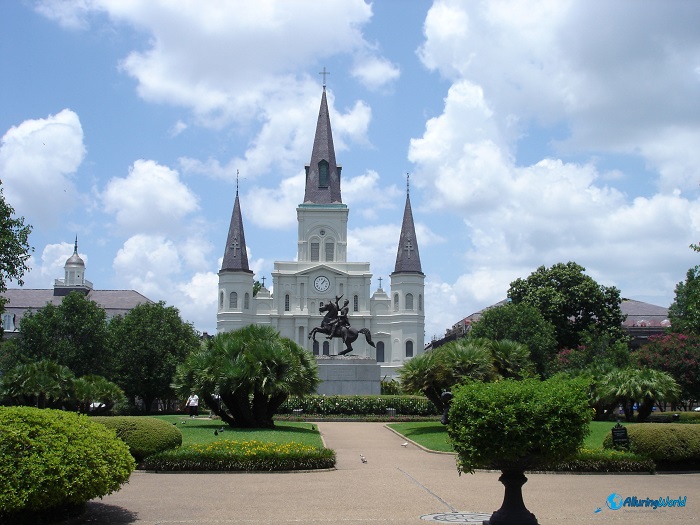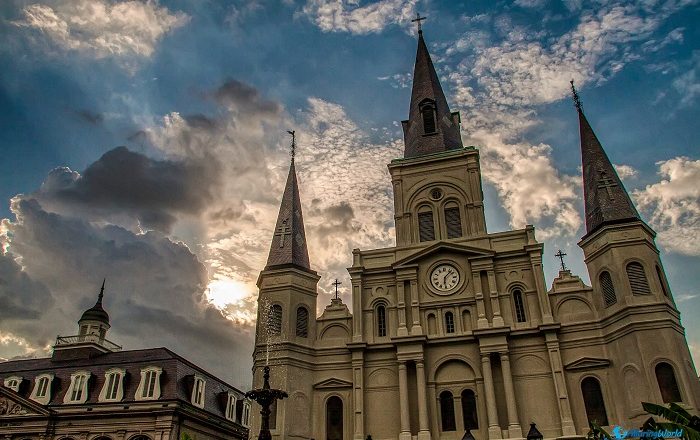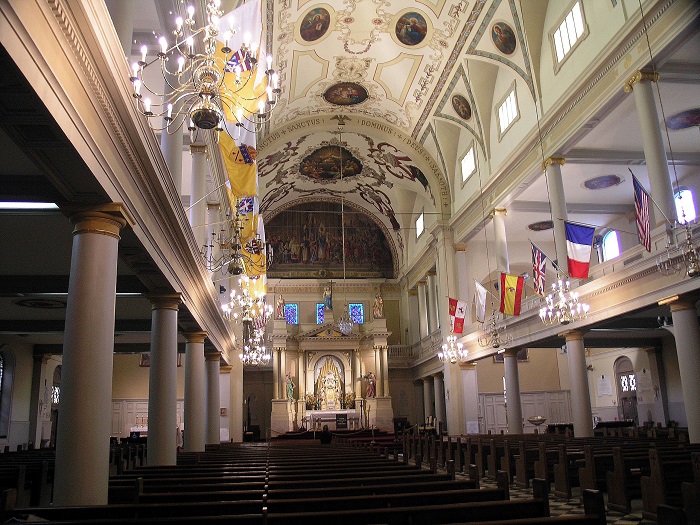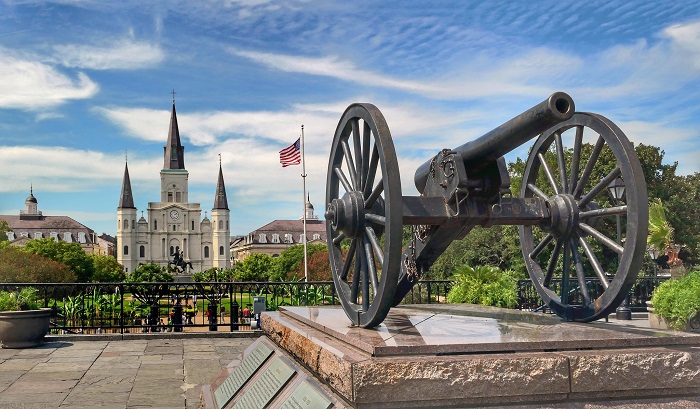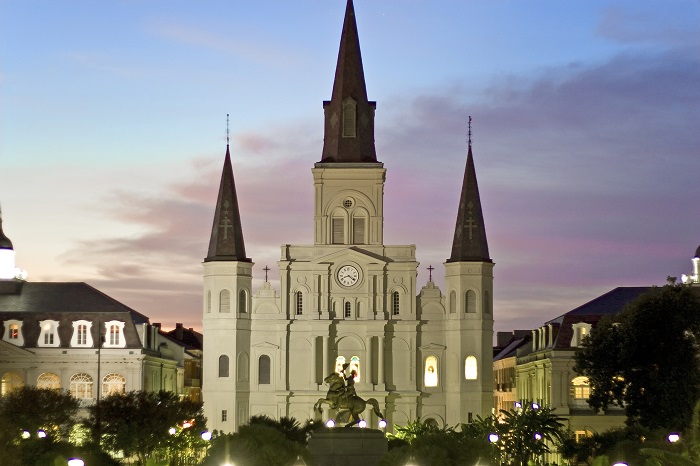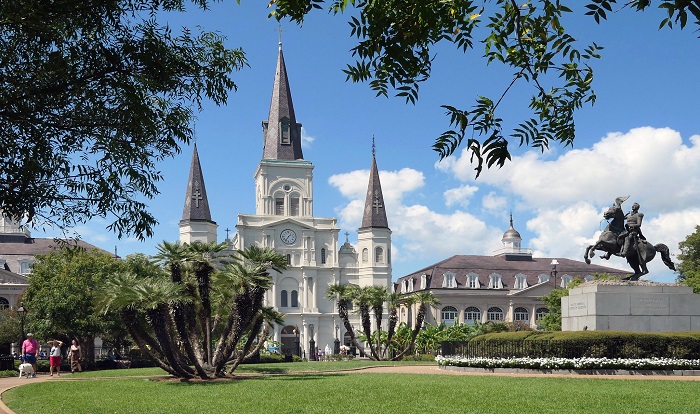The St. Louis Cathedral, officially known as the Cathedral-Basilica of Saint Louis, King of France, is a large cathedral that serves also as the official seat of the Roman Catholic Archdiocese of New Orleans, and it is located on Jackson Square in the central part of the city of New Orleans, in southeastern Louisiana, within the deep south of the United States of America.
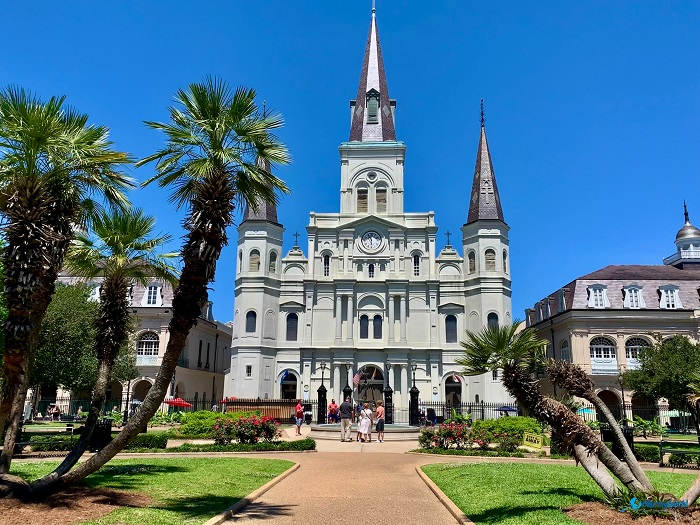
As the cathedral is located in the heart of the historic French Quarter, it is a towering example of Spanish Colonial architecture that was named after King Louis IX of France. Throughout history, several buildings were constructed in the place where the cathedral is, with the first cathedral building built as a crude wooden structure in 1718 when Louisiana was still under French rule.
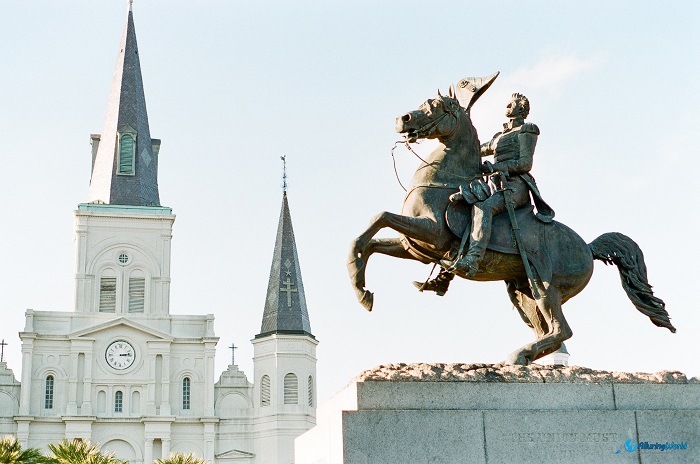
The second building of the St. Louis Cathedral began in 1725, completing the brick and timber larger building in 1727, however, it was destroyed by the Great New Orleans Fire of 1788. With the Spanish takeover of Louisiana in 1764, the third and current building of the cathedral was erected in 1789 and finally completed in the 1850s with renovation plans that had an interesting story.
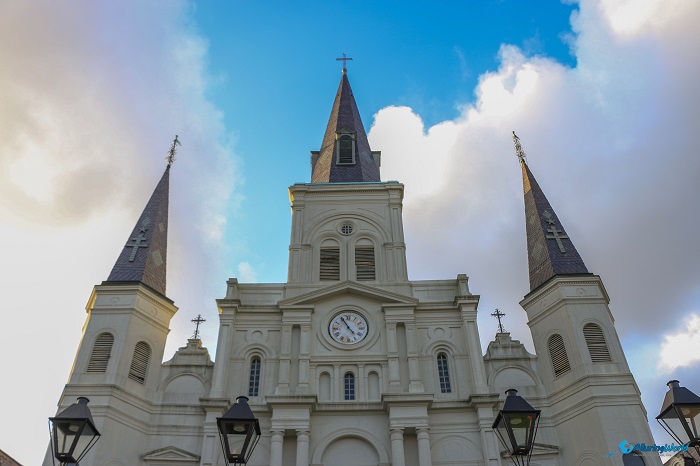
During this renovation that happened throughout the 1800s, John Patrick Kirwan was given the task to enlarge and restore the cathedral, using the plans of De Puilly from 1834.
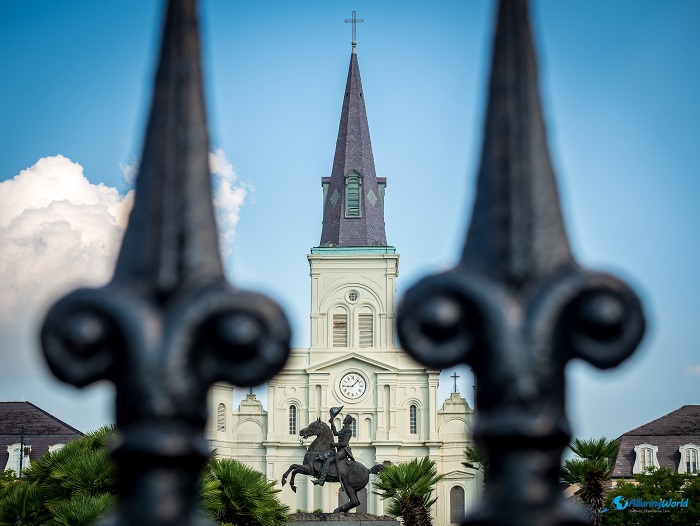
It was decided that the entire structure, except the lateral walls and lower portions of the existing towers, would be left standing, although later on it was determined that the sidewalls would need to be demolished too. Unfortunately, during the renovation process, the central tower of St. Louis Cathedral collapsed, causing the loss of much of its original Spanish Colonial design.
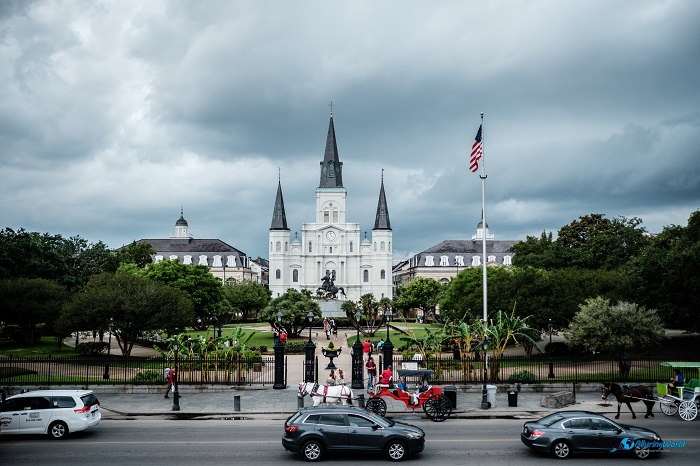
Despite these setbacks, the cathedral was eventually transformed into the magnificent building that we admire today. Throughout the years, the cathedral served as the center of Catholic worship in the French colony of Louisiana, and it was the Spanish that raised its status to a cathedral in 1793.
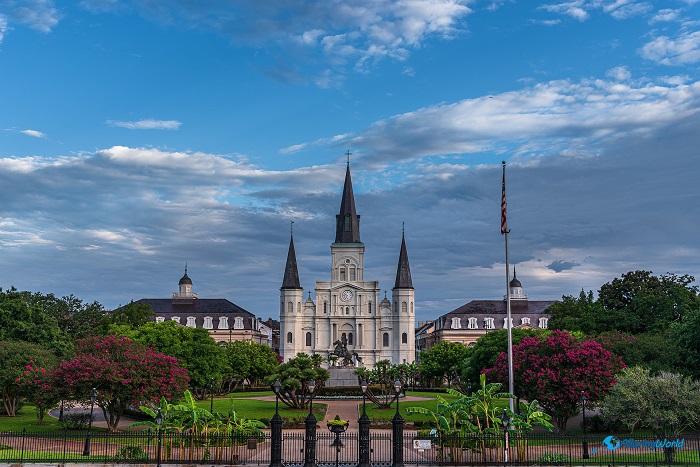
One of the most striking features is its three spires, which rise high above the French Quarter and provide a beautiful contrast against the blue skies of New Orleans. The spires, which were added during the late 1800s renovation, give the cathedral a distinctive look and make it easily recognizable from a distance and a great landmark for the city.
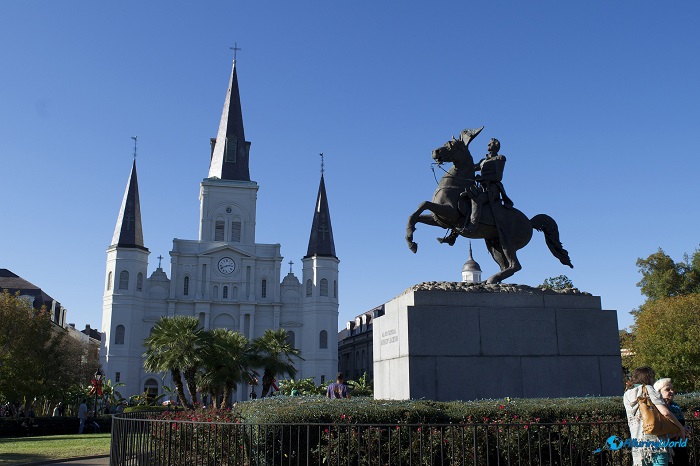
In addition to its impressive architecture, St. Louis Cathedral is also known for its rich history which was an important site of many events, including the funerals of several Louisiana governors, the installation of several bishops, and the celebration of numerous religious holidays.
In addition, the cathedral has also played a role in the history of New Orleans, serving as a focal point for religious and cultural events in the city. Today, St. Louis Cathedral continues to be an important part of the community in New Orleans, as well as serving as a popular tourist destination, attracting thousands of visitors each year who come to admire its beauty, learn about its history, and participate in its religious services.
Being able to host a variety of events too, including concerts, festivals, and other cultural events, it certainly brings the community together and celebrates the rich history and culture of the amazing New Orleans.
In conclusion, St. Louis Cathedral is a beautiful and historic landmark that has played an important role in the religious and cultural life of New Orleans for centuries, and with its impressive architecture, rich history, and ongoing cultural significance, the cathedral continues to be a beloved destination for visitors and a source of pride for the people of New Orleans.
